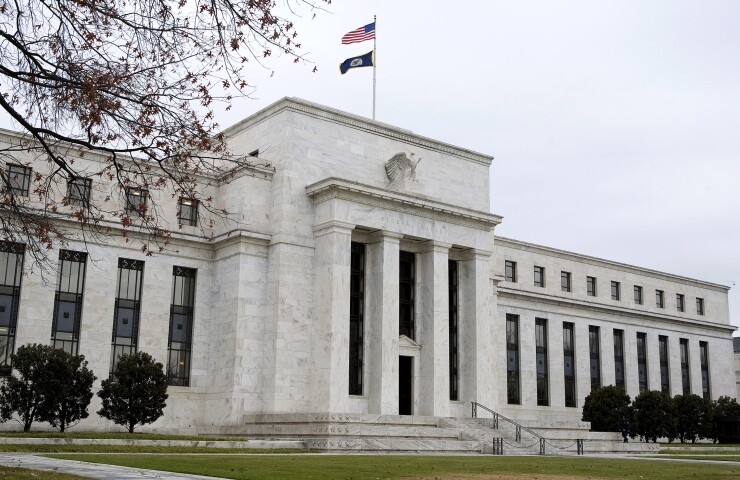Federal Open Market Committee participants want more information on yield curve control, how it would work and what it would mean for the economy, according to minutes of the Federal Open Market Committee’s June meeting.
“All participants agreed that it would be useful for the staff to conduct further analysis of the design and implementation of YCT policies as well as of their likely economic and financial effects,”
Participants in the meeting that took place on June 9 and 10, reviewed the yield curve caps or targets policies that the Federal Reserve followed back during World War II, as well as what both the Bank of Japan and the Reserve Bank of Australia are current employing.

These three experiences illustrated different types of YCT policies, according to the minutes.
“During World War II, the Federal Reserve capped yields across the curve to keep Treasury borrowing costs low and stable; since 2016, the Bank of Japan has targeted the 10-year yield to continue to provide accommodation while limiting the potential for an excessive flattening of the yield curve; and, since March 2020, the Reserve Bank of Australia has targeted the three-year yield, a target that is intended to reinforce the bank’s forward guidance for its policy rate and to influence funding rates across much of the Australian economy,” the minutes stated.
Based off of those three examples, the staff noted that these experiences suggested that “credible YCT policies can control government bond yields, pass through to private rates, and, in the absence of exit considerations, may not require large central bank purchases of government debt.”
“However, the staff also highlighted the potential for YCT policies to require the central bank to purchase very sizable amounts of government debt under certain circumstances—a potential that was realized in the U.S. experience in the 1940s—and the possibility that, under YCT policies, monetary policy goals might come in conflict with public debt management goals, which could pose risks to the independence of the central bank,” according to the minutes.
Many participants remarked that, as long as the committee’s forward guidance remained credible on its own, it was not clear that there would be a need for the Committee to reinforce its forward guidance with the adoption of an YCT policy.
“A number of participants commented on additional challenges associated with YCT policies focused on the longer portion of the yield curve, including how these policies might interact with large-scale asset purchase programs and the extent of additional accommodation they would provide in the current environment of very low interest rates,” the minutes said.
ADP employment report
Total nonfarm private employment increased by 2.369 million in June, after 2.760 million jobs were lost in May, ADP said Wednesday.
Economists polled by IFR Markets expected the number of jobs to rise to 3.0 million.
“Small business hiring picked up in the month of June,” said Ahu Yildirmaz, vice president and co-head of the ADP Research Institute. “As the economy slowly continues to recover, we are seeing a significant rebound in industries that once experienced the greatest job losses. In fact, 70 percent of the jobs added this month were in the leisure and hospitality, trade and construction industries.”
ISM manufacturing PMI
The Institute for Supply Management's manufacturing sector index rose to 52.6% in June from 43.1% in May, according to the release on Wednesday.
Economists expected the index would rise to 49.0%.
“This figure indicates expansion in the overall economy for the second straight month after April’s contraction, which ended a period of 131 consecutive months of growth,” the release said. “June signifies manufacturing entering an expected expansion cycle after the disruption caused by the coronavirus (COVID-19) pandemic.”
The new orders index grew to 56.4% from May’s 32.9%. Production gained to 57.3% from 33.2% the previous month.
The employment index climbed to 42.1% from 32.1%. The prices index rose to 51.3% from 40.8%, while inventory sentiment nudged up to 50.5% from 50.4%.
Construction spending
Construction spending in May was estimated at a seasonally adjusted annual rate of $1.356.4 billion or 2.1% below the revised April estimate of $1.386.1 billion, according to data released by The U.S. Census Bureau on Wednesday.
Economists expected spending to increase 1.0%.
However, the most recent figure is 0.3% higher than the $1.353 billion of spending that occurred in May of 2019.
For the first five months of the year, construction spending totaled $543.2 billion or 5.7% more than the $513.7 billion that occurred in the same time period of 2019.





